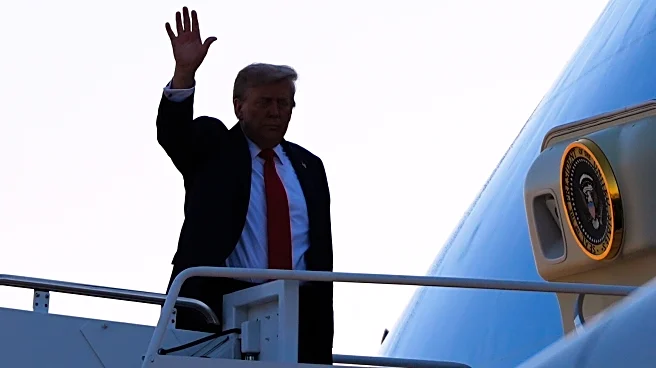Rapid Read • 8 min read
President Trump met with Russian President Vladimir Putin at Joint Base Elmendorf-Richardson in Anchorage, Alaska, on August 15, 2025. The summit was initially intended to discuss a ceasefire in the ongoing conflict in Ukraine. However, it was reframed by White House Spokesperson Karoline Leavitt as a 'listening exercise' to help Trump understand how to potentially end the war. Analysts had expressed skepticism about the likelihood of achieving a ceasefire, noting that Putin does not take Trump seriously. Despite no agreement being reached, Trump described the meeting as 'very productive' and announced plans to pursue a 'peace agreement' rather than a ceasefire.
AD
The summit's outcome highlights the complexities of international diplomacy and the challenges in resolving the conflict in Ukraine. The lack of a ceasefire agreement underscores the difficulties in negotiating with Russia, which has been a significant geopolitical player in the region. The meeting's reframing as a 'listening exercise' suggests a shift in strategy by the U.S., potentially impacting future diplomatic efforts. The pursuit of a 'peace agreement' indicates a broader approach to conflict resolution, which could have implications for U.S. foreign policy and its relationships with both Ukraine and Russia.
President Trump's announcement of pursuing a 'peace agreement' suggests ongoing diplomatic efforts to resolve the conflict. The next steps may involve further negotiations with Russia and Ukraine, as well as consultations with international allies. The U.S. may also face pressure to clarify its position and strategy in the region, particularly from stakeholders who are directly affected by the conflict. The international community will likely monitor these developments closely, as they could influence broader geopolitical dynamics.
The summit's reframing and the pursuit of a 'peace agreement' may reflect deeper strategic considerations by the U.S. administration. This approach could signal a shift towards more comprehensive conflict resolution strategies, potentially involving economic, political, and humanitarian dimensions. The implications for international law and the principles of sovereignty and territorial integrity may also be significant, as the U.S. navigates complex diplomatic terrain.
AD
More Stories You Might Enjoy











